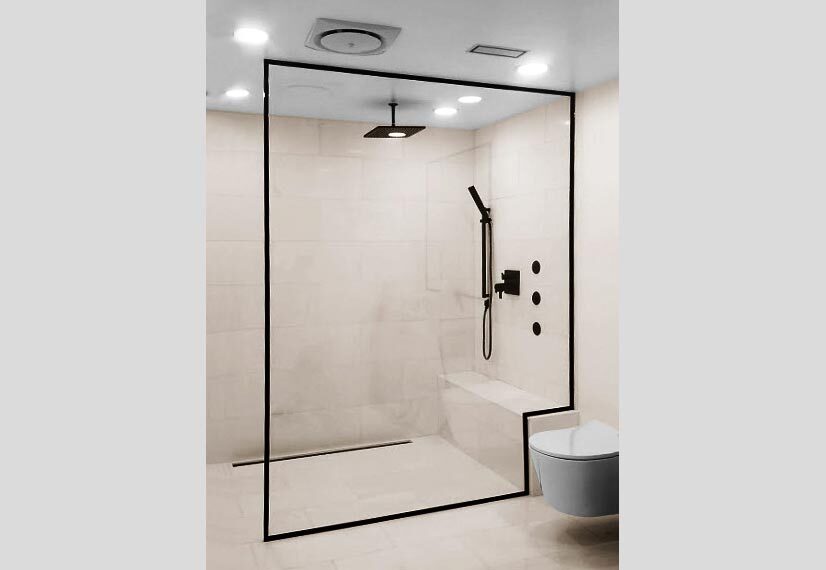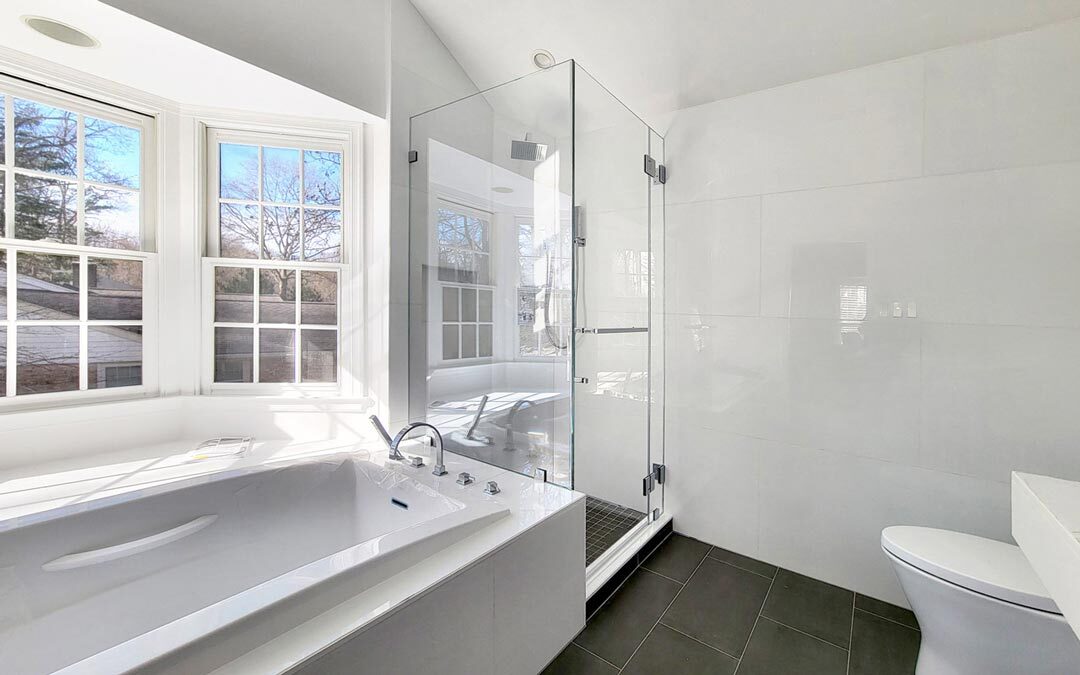Shower Design – Frameless, Semi-Frameless, and Framed
10th Apr 2025

In the world of glass showers, there are three basic types: frameless, semi-frameless, and framed. Understanding these terms and the pros and cons of each type of construction is a key aspect of picking the right enclosure for a new or remodeled bathroom. Some of the same hardware is used on all three types, as is tempered glass. However, since there are also notable differences, we’ll explore the characteristics of each style and their potential benefits for your project.
Framed Showers – Features, Pros, and Cons

Although they are the least popular of the three, we’ll start with the one that’s been around the longest: framed glass showers. On this type of enclosure, each piece of glass is framed with aluminum. On the plus side, this metal provides some protection for the delicate glass edges and makes it possible to use thinner, less expensive glass. (This is because the framing adds rigidity and helps with structural integrity.) On the other hand, framing disrupts the view of the shower’s tile and sometimes give the enclosure a more dated appearance. Framed showers can still be customized by way of:
- Configuration
- Glass type
- Door handle style
- Hardware finish
- Framing width
Finally, black framed glass is a stylish choice for a shower screen these days, and glass wrapped in black U-channel with black grids printed on the surface is also popular.
Semi-Frameless Showers – Features, Pros, and Cons

As the name suggests, a semi-frameless glass enclosure has less metal than a framed but more than a frameless. The exterior border of the enclosure is always framed, but the door panel is frameless. Most bypass door systems are semi-frameless. These can also be personalized through your choice of glass, hinges, finish, etc. Even though they are not as fashion forward as fully frameless units, these enclosures include some frameless glass and can be more on-trend than a fully framed design. Since framing is present around the perimeter, glaziers can use slightly thinner glass on semi-frameless showers compared to frameless. This tends to bring the cost down, which is another attractive feature.
Frameless Showers – Features, Pros, and Cons

Frameless glass shower design has been and remains the favorite. On these shower stalls, the framing is replaced by clamps (see examples here), hinges, and caulk joints. The frame-free design provides a much clearer view of the shower’s interior and tile than framed or semi-frameless enclosures. Also, the simplicity of its design translates into greater simplicity of care and cleaning. Thick, heavy glass is used to keep the enclosure stable, so a frameless door panel has an impressive weight and substance. Glass is front and center, but the hardware – like towel bars – contributes to the enclosure’s style and can even function as ornaments on the glass. These many appealing qualities explain why this type of shower construction is so beloved. The only significant “con” is the higher price point. Also, some designs emphasize metal elements, especially matte black, satin brass, and brushed bronze. For a decorating scheme like this, framing around the shower glass can actually be desirable.
Shop Glass Simple for Frameless Shower Hardware
Glass Simple specializes in offering a variety of frameless shower hardware from our own brand as well as FHC and Portals. Our helpful Virginia-based team is ready to answer questions at (571) 707-7760, and lower prices are offered to B2B accounts. However, we also make it easy for homeowners to source quality hardware by not requiring account creation or a minimum order amount. Browse our site today!




